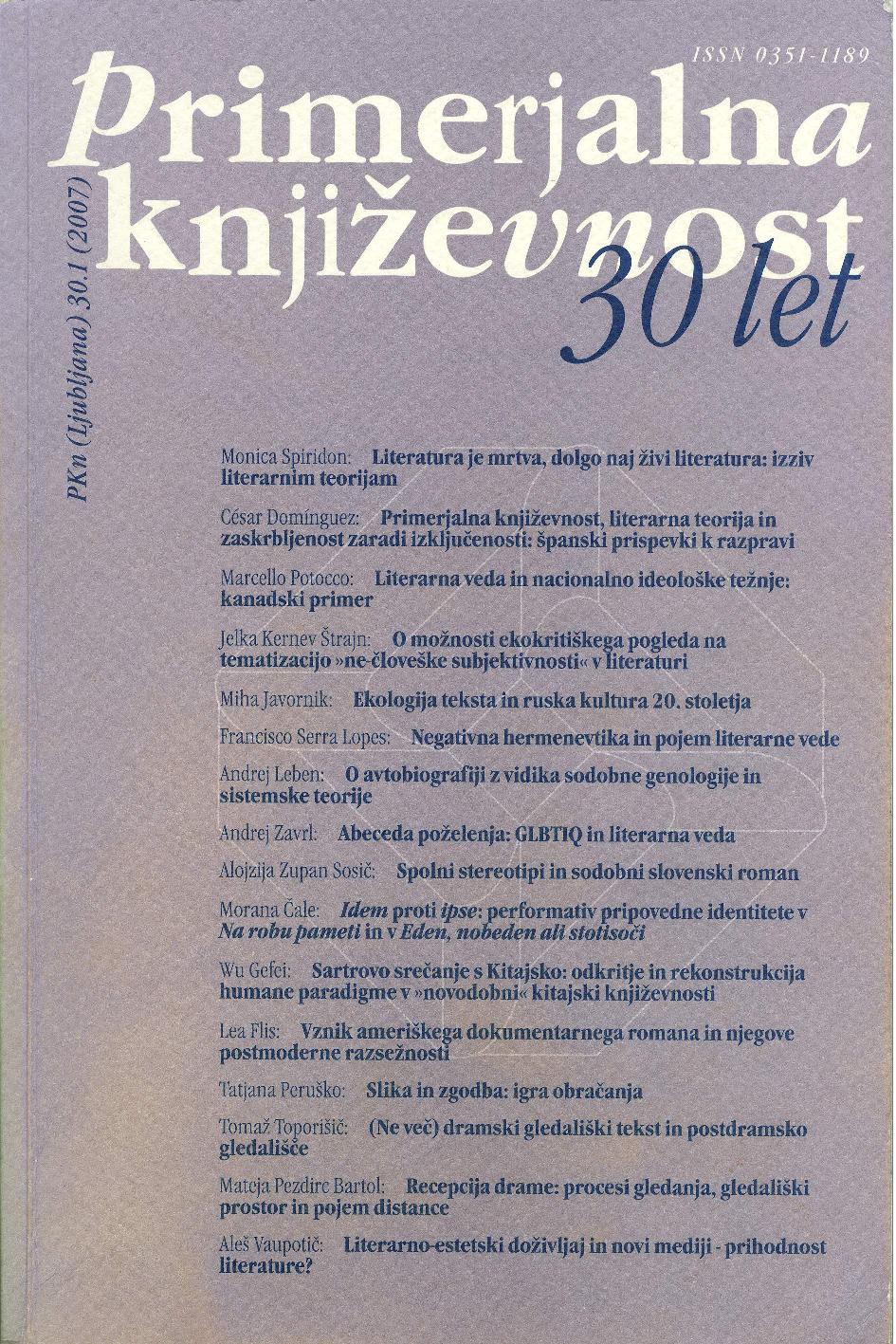The Painting and the Story: The Backwards Game
Keywords:
literature and painting, intersemiotics, intertextuality, Italian literature, Tabucchi, Antonio, Velázquez, DiegoAbstract
As a special example of intersemiotic interaction between a painting and a story, this analysis concentrates on the title story of the collection Il gioco del rovescio (The Backwards Game, 1988) by the Italian writer Antonio Tabucchi. The story’s metaphorical and structural framework is provided by Diego Velázquez’s Las Meninas (The Maids of Honor), a painting that has a special mise-en-abyme effect in Tabucchi’s anamorphosis. Its function is not to expand the story’s content through semantic analogy or to alleviate the ellipticalness typical of Tabucchi’s narrative oeuvre, but to intermedially establish the epistemological metaphors of backwardness and dreaming depicted in the story through analogy with the structural features and symbolic potentials of Diego Velásquez’s polycentric and autoreflexive painting, which are the subject of the rich hermeneutic investigation. The painting discussed is the main exhibit at the gallery of carefully selected intertextual references connecting Baroque poetics (such as Luis de Góngora and Sóror Violante do Céu) with Fernando Pessoa’s heteronym pluralism. The unattainable contradiction of the various depictions of the love relationship between the protagonists, who at the same time are also admirers of Pessoa’s backwards art, acquires emblematic meaning – especially thanks to Velázquez’s Las Meninas and the hermeneutic perspectives opened up by intertextual signals. The story of the obverse and reverse of the love relationship thus changes into a story about an endless multiplication of views, which brings lasting instability into the relationship between the subject and the object. In Tabucchi’s collection The Backwards Game and other works written in the 1980s, it is this constituted polysemy that suggests narrative modalities based upon the play of perspectives, as well as narrative allusiveness and ellipticalness.References
Calvino, Italo. Lezioni americane. Milano: Garzanti, 1988.
Damisch, Hubert. Porijeklo perspektive. Zagreb: Institut za povijest umjetnosti, 2006. (v izvirniku L’Origin de la perspective, 1989).
Foucault, Michel. Les mots et les choses. Pariz: Gallimard, 1966.
Genette, Gerard. Figures III. Pariz: Seuil, 1972.
Lacan, Jacques. XI. seminar. Štirje temeljni koncepti psihoanalize. Ljubljana: Društvo za teoretsko psihoanalizo, 1996. (v izvirniku Le quatre concept fondamentaux de la psychanalyse. Pariz: Seuil, 1973).
– – –. Séminaire XIII (4 Mai, 11 Mai 1966). gaogoa.free.fr.
Meschini, Michela. »Rewriting Las Meninas.« Images and Imagery (Frames, Borders, Limits – Interdisciplinary Perspectives). Ur. Boldt-Irons L., Federici C., Virgulti E. New York, Washington, etc: Peter Lang, 2005. 213–223.
Mitchell, W. J. Tomas. Picture Theory. Chicago & London: The University of Chicago Press, 1995. (1. izd. 1994).
Palmieri, Givanni. »Antonio Tabucchi’s Iconic Temptations.« Antonio Tabucchi (A Collection of Essays). Spunti e Ricerche, 12 (1996/97): 125–140.
Pasolini, Pier Paolo. Calderón. Milano: Garzanti, 1973.
Searle, John. »Las Meninas and the Paradoxes of Pictorial Representation.« Critical Inquiry 6.3 (1980): 477–488.
Snyder, Joel. »Las Meninas and the Mirror of the Prince.« Critical Inquiry 11.4 (1985): 539–572.
Snyder, Joel. Cohen, Ted. »Reflections on Las Meninas: Paradox Lost. Critical Response.« Critical Inquiry 6.2 (1980): 429–447.
Spaccini, Jacqueline. L’elemento pittorico nella narrativa italiana contemporanea (1975–2000). Doktorska disertacija. Zagreb: Filozofski fakultet, 2006.
Spinicci, Paolo. »La filosofia nelle immagini: Las Meninas di Velázquez e il concetto di raffigurazione.« Le parole della filosofia II (1999). www.apl.it.
Steinberg, Leo. »Velázquez’s Las Meninas.« Representations 1 (1983). Cit. po Las Meninas. Ur. Alessandro Nova. Milano: Il Saggiatore 1997. 75–88.
Stoichita, Victor. L’Invenzione del quadro (v izvirniku L’instauration du tableau, 1993). Milano: Il Saggiatore, 2004.
Tabucchi, Antonio. I volatili del Beato Angelico. Palermo: Sellerio, 1997. (1. izd. 1987).
– – –. Il gioco del rovescio. Milano: Feltrinelli, 1991. (1. izd. 1988).
– – –. Notturno indiano. Palermo: Sellerio, 1999. (1. izd.1984).
– – –. Requiem. Milano: Feltrinelli, 1992. (portugalski izvirnik 1991).
– – –. Un baule pieno di gente (Scritti su Fernando Pessoa). Milano: Feltrinelli, 2000. (1. izd. 1990).


